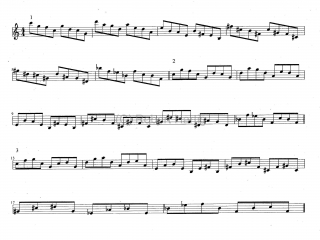Back in April 2012, I wrote about how it felt to pick up my sax again after weathering the worst case of bronchitis I have ever experienced. In short, after three miserable weeks away from my horn, it felt wonderful to pick it up again. I was rusty and had a little ground to reclaim, but that was okay; where my technique had suffered a bit, my creativity seemed to move to the forefront, and my playing felt fresh.
A year-and-a-half later, I’m here to share a similar experience. And I’ll begin by saying that I’m truly fortunate–graced, blessed by God–to be able to write about it, because I could be dead. It was no nasty cold that took me down this time but a bad car crash in Indiana last November. Fortunately, no one was seriously injured, but, sitting in the front passenger seat of the car I was traveling in–which was mine but with a friend driving–I took the brunt of the collision. Upon emerging from the car, I could tell that something was wrong with my chest. I felt no pain at the moment, just discomfort, but I had a hunch that would change pretty quickly, and it did.
For the next several days, my chest hurt pretty badly. I figured I had bruised my sternum, perhaps even cracked it, and probably sustained several levels of injury involving my muscles and ribcage. Four or five days later, the pain gradually began to subside, but it took yet another week or so before I was able to cough freely or sneeze without ruining myself for the next hour.
Finally, last week, I picked up my sax for the first time and blew. I’d like to tell you how great that felt, but “great” isn’t the right word. It just felt…normal. Kind of flat, really–like pretty much any practice session in which I haven’t felt particularly inspired but practiced anyway because I needed to. As best I could, I simply picked up where I had left off before the accident, playing through the Bird tunes “Confirmation” and “Ornithology,” including some transcriptions of those solos, and reacquainting myself with a couple of dominant seventh patterns I’d been working on.
But wait a minute. Both of those tunes are pretty complex bebop tunes, and a year ago, I couldn’t even play “Confirmation.” To be able to just jump back in the saddle with it after five weeks of not even touching my horn–that tells me this last year in the woodshed has been a profitable one. I’ve raised my baseline of ability on my instrument; music that once seemed formidable has been internalized.
I’ve had two practice sessions since, and last night’s felt great. Time to work on some new ideas as well as brush up on the stuff I’d been working on prior to the crash.
But here’s the take-away: Developing musical proficiency isn’t about emotion or instant gratification. It’s about discipline. Your practice sessions don’t have to feel creatively inspired; they just have to be consistent. You just have to stick with it. If you do, and if you practice the right stuff, then you’ll grow.
A farmer’s job is to plant his seeds, water them, and nurture them. If he does, then the seed will germinate and grow, and in due time, the farmer will reap a harvest. That’s how it works. It’s not about inspiration; it’s about hard work and dedication, and the same holds true for learning to play jazz or any kind of music. Get your priorities in place and the moments of inspiration will come.


